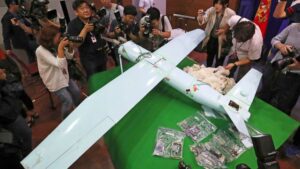
- image source CNN
Sign up for CNN’s Wonder Theory science newsletter. Explore the universe with news on fascinating discoveries, scientific advancements and more.
In works of science fiction, such as “Interstellar” and “Star Trek,” wormholes in the universe allow interstellar travel and allow spaceships to quickly and easily cross vast distances. A simple solution would be great.
A greater knowledge of wormholes has long been a goal of science, and it now seems that they are moving in the right direction. On Wednesday, scientists reported that they had created two miniature simulated black holes on a quantum computer and sent a message via what amounted to a space-time tunnel between them. Black holes are extremely dense celestial objects that are so strong that even light cannot escape.
According to Maria Spiropulu, a physicist at Caltech and co-author of the study published in Nature, it was a “baby wormhole.” She noted that while scientists have come a long way, they still have a long way to go before they can successfully transfer humans or other live creatures via one of these portals.
“Experimentally, for me, I will tell you that it’s very, very far away. People come to me and they ask me, ‘Can you put your dog in the wormhole?’ So, no,” Spiropulu told reporters during a video briefing. “That’s a huge leap.”
“There’s a difference between something being possible in principle and possible in reality,” added physicist and study co-author Joseph Lykken of Fermilab, America’s particle physics and accelerator laboratory. “So don’t hold your breath about sending your dog through the wormhole. But you have to start somewhere. And I think to me it’s just exciting that we’re able to get our hands on this at all.”
The researchers detected the wormhole dynamics on the Sycamore quantum processor at Alphabet’s Google.
A wormhole, which is a hole in space and time, connects two far-flung parts of the universe. Einstein and Nathan Rosen, two physicists, described these phenomena, thus scientists now call them Einstein-Rosen bridges.
As a result of its emphasis on gravity, Einstein’s general theory of relativity is compatible with the existence of such wormholes. In the 1950s, physicist John Wheeler came up with the word “wormhole.”
According to Spiropulu, the researchers have identified a quantum system that displays essential traits of a gravitational wormhole, but is compact enough to be implemented on current quantum technology (hardware).
“It looks like a duck, it walks like a duck, it quacks like a duck. So that’s what we can say at this point – that we have something that in terms of the properties we look at, it looks like a wormhole,” Lykken said.
While the experiment did not result in a literal rip in space and time, the researchers claimed that a wormhole might be used to travel through the quantum information that was transferred using the quantum processor’s codes.
“These ideas have been around for a long time and they’re very powerful ideas,” Lykken said.
“But in the end, we’re in experimental science, and we’ve been struggling now for a very long time to find a way to explore these ideas in the laboratory. And that’s what’s exciting about this. It’s not just, ‘Well, wormholes are cool.’ This is a way to look at these very fundamental problems of our universe in a laboratory setting.”





